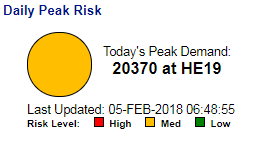On the heels of the Independent Electricity System Operator’s (IESO) positive 18-month Outlook report on grid reliability, Reuters reports that electricity networks across the United States and Canada set new records for reliability last year. Even with concerns over extreme weather and other events that could cause power failures, according to the North American Electric Reliability Corporation (NERC), electricity networks are overall becoming more reliable as a result of increased investment and attention to operational standards over the past 10 years.
In 2014 there were fewer emergency alerts, fewer unplanned transmission outages, and zero customers lost electricity from cyber or physical attacks on electricity infrastructure. Although there has been fear about the possibility of these attacks, the most significant threat to power systems reliability are extreme weather and human error.
Increased resiliency and reliability is reportedly a direct result of the August 2003 blackout, which left 50 million people without power. Grid operators have since invested in greater transmission capacity. For instance, demand-side management programs like demand response capacity markets are credited with helping to reduce peaks at high demand hours, which helps to maintain the grid’s reliability.
Operators have also put more emphasis on averting critical conditions through planning and training. NERC’s emphasis on prevention has resulted in the development of mandatory reliability standards, like tree-cutting around transmission lines, since this major blackout.
According to Reuters, continued improvements to the grid will translate to greater resilience and reliability for years to come.



